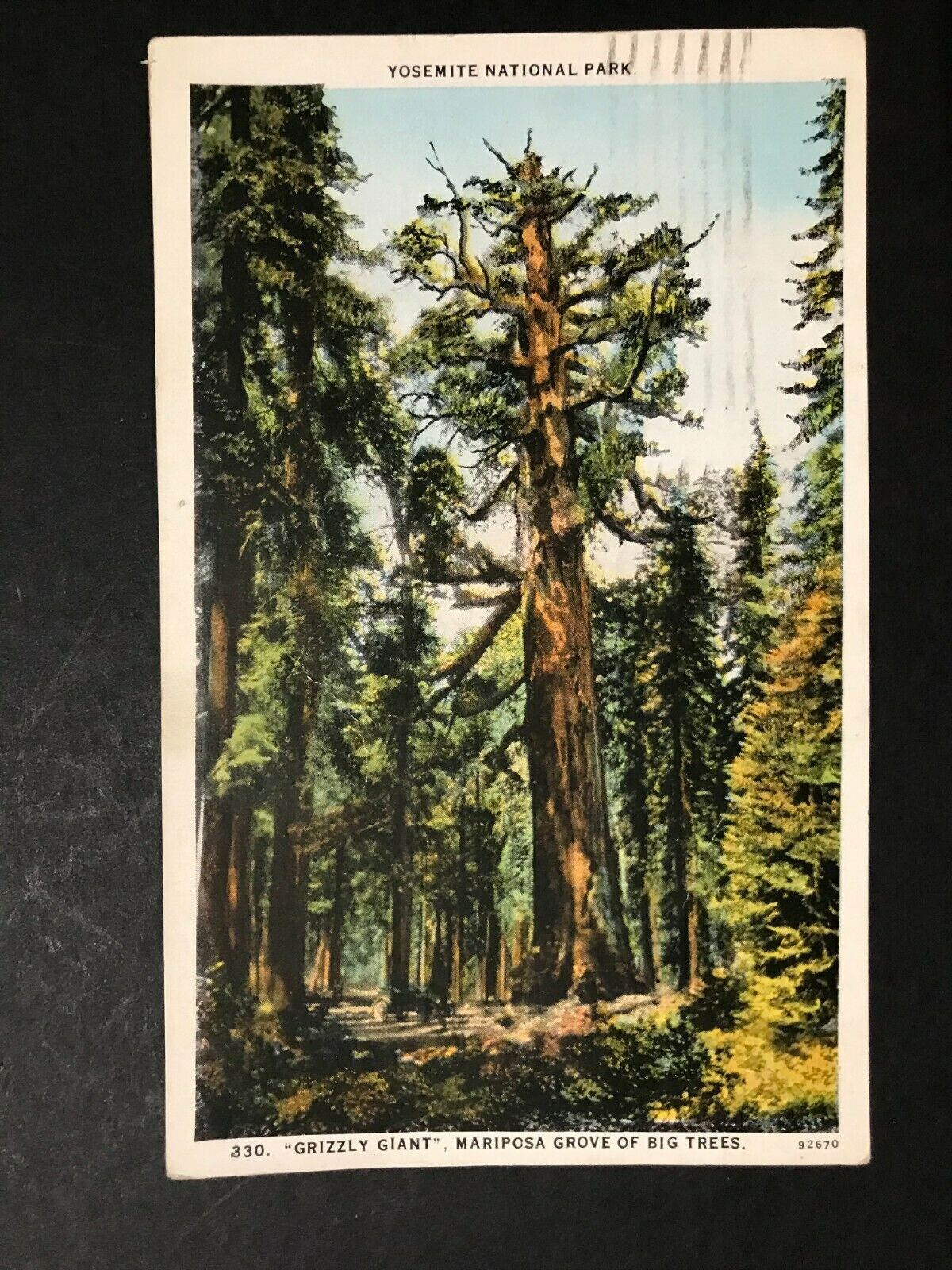-40%
Yosemite National Park Postcard Used July 3rd 1928, The Grizzly Giant Vintage
$ 1.05
- Description
- Size Guide
Description
Yosemite National Park Postcard Used July 3rd 1928, The Grizzly Giant VintageGrizzly Giant, Mariposa Grove of Big Trees, Height 204 feet, 93 feet in circumference and 29 feet in diameter at base. The Mariposa Grove contains about 545 trees of the giant variety, a great many estimated to be from three to four thousand years old.
Western Publishing & Novelty Co, Los Angeles, Calif.
California
Very neat piece of American History from the roaring 20's.
Yosemite National Park
(
/
j
oʊ
ˈ
s
ɛ
m
ə
t
i
/
yoh-
SEM
-ət-ee
)
[4]
is an American
national park
in
Northern California
,
[5]
[6]
surrounded on the southeast by
Sierra National Forest
and on the northwest by
Stanislaus National Forest
. The park is managed by the
National Park Service
and covers an area of 748,436 acres (1,169 sq mi; 3,029 km
2
)
[2]
and sits in four
counties
: centered in
Tuolumne
and
Mariposa
, extending north and east to
Mono
and south to
Madera County
. Designated a
World Heritage Site
in 1984, Yosemite is internationally recognized for its granite cliffs, waterfalls, clear streams,
giant sequoia
groves, lakes, mountains, meadows, glaciers, and
biological diversity
.
[7]
Almost 95% of the park is designated
wilderness
.
[8]
Yosemite is one of the largest and least fragmented habitat blocks in the Sierra Nevada, and the park supports a diversity of plants and animals. The park has an elevation range from 2,127 to 13,114 feet (648 to 3,997 m) and contains five major
vegetation zones
:
chaparral
and
oak
woodland,
lower montane forest
, upper
montane forest
,
subalpine zone
, and
alpine
. Of California's 7,000 plant species, approximately 50% occur in the Sierra Nevada and more than 20% are within Yosemite. The park contains suitable habitat for more than 160 rare plants, with rare local
geologic
formations and unique
soils
characterizing the restricted ranges many of these plants occupy.
[7]
The
geology of the Yosemite area
is characterized by granitic rocks and remnants of older rock. About 10 million years ago, the Sierra Nevada was uplifted and then tilted to form its relatively gentle western slopes and the more dramatic eastern slopes. The uplift increased the steepness of stream and river beds, resulting in the formation of deep, narrow canyons. About one million years ago, snow and ice accumulated, forming glaciers at the higher alpine meadows that moved down the river valleys. Ice thickness in
Yosemite Valley
may have reached 4,000 feet (1,200 m) during the early glacial episode. The downslope movement of the ice masses cut and sculpted the
U-shaped valley
that attracts so many visitors to its scenic vistas today.
[7]










